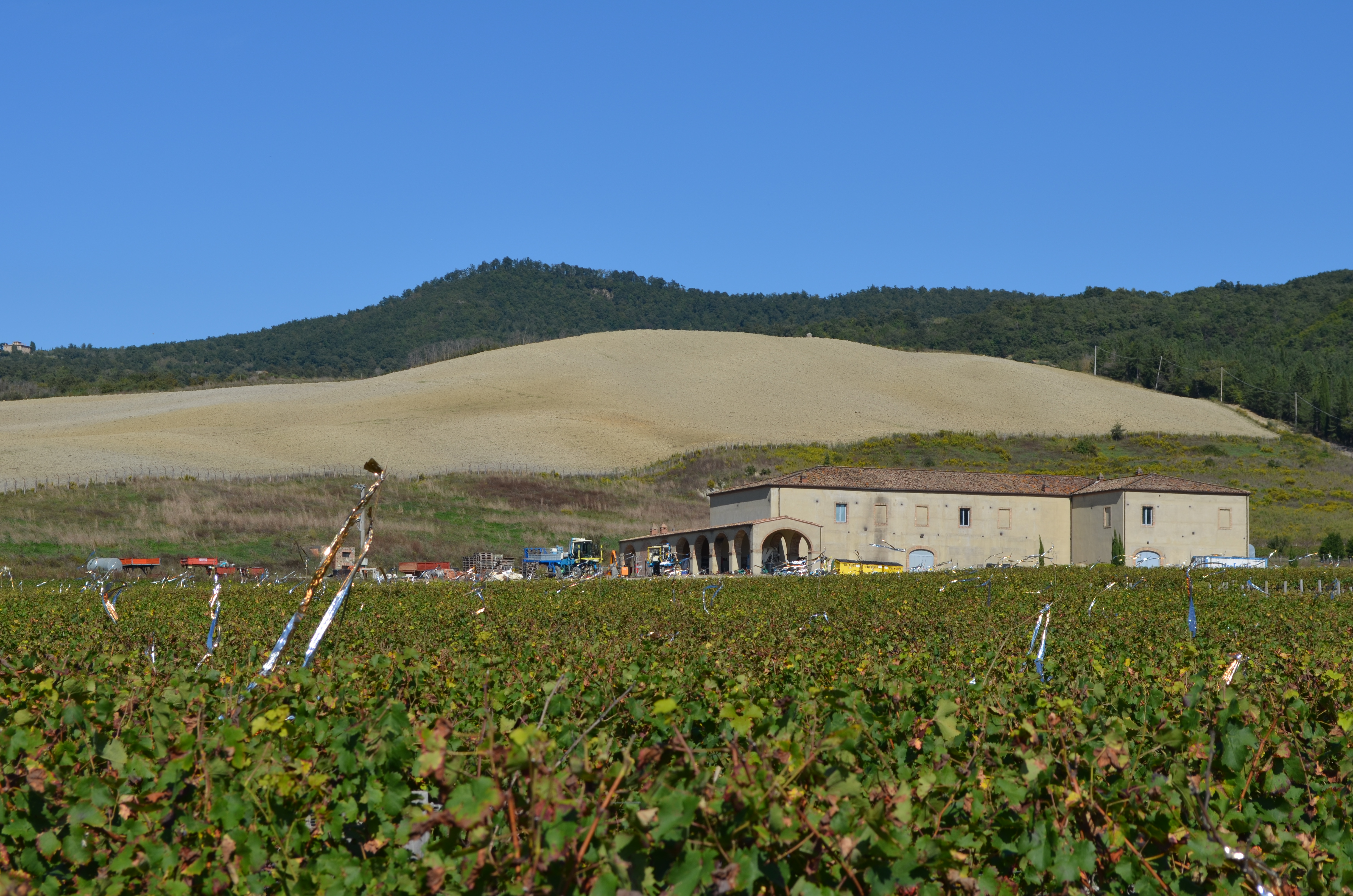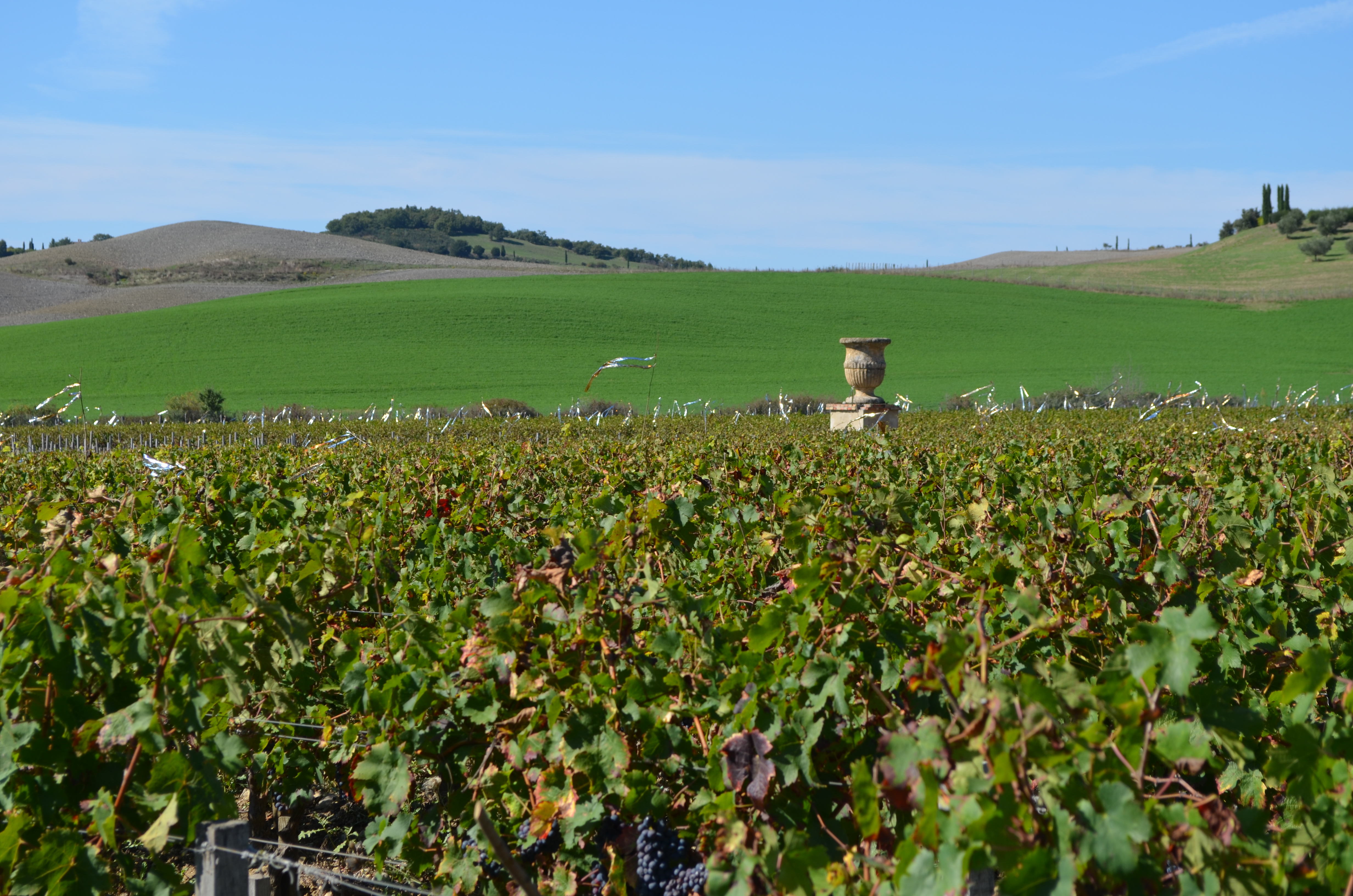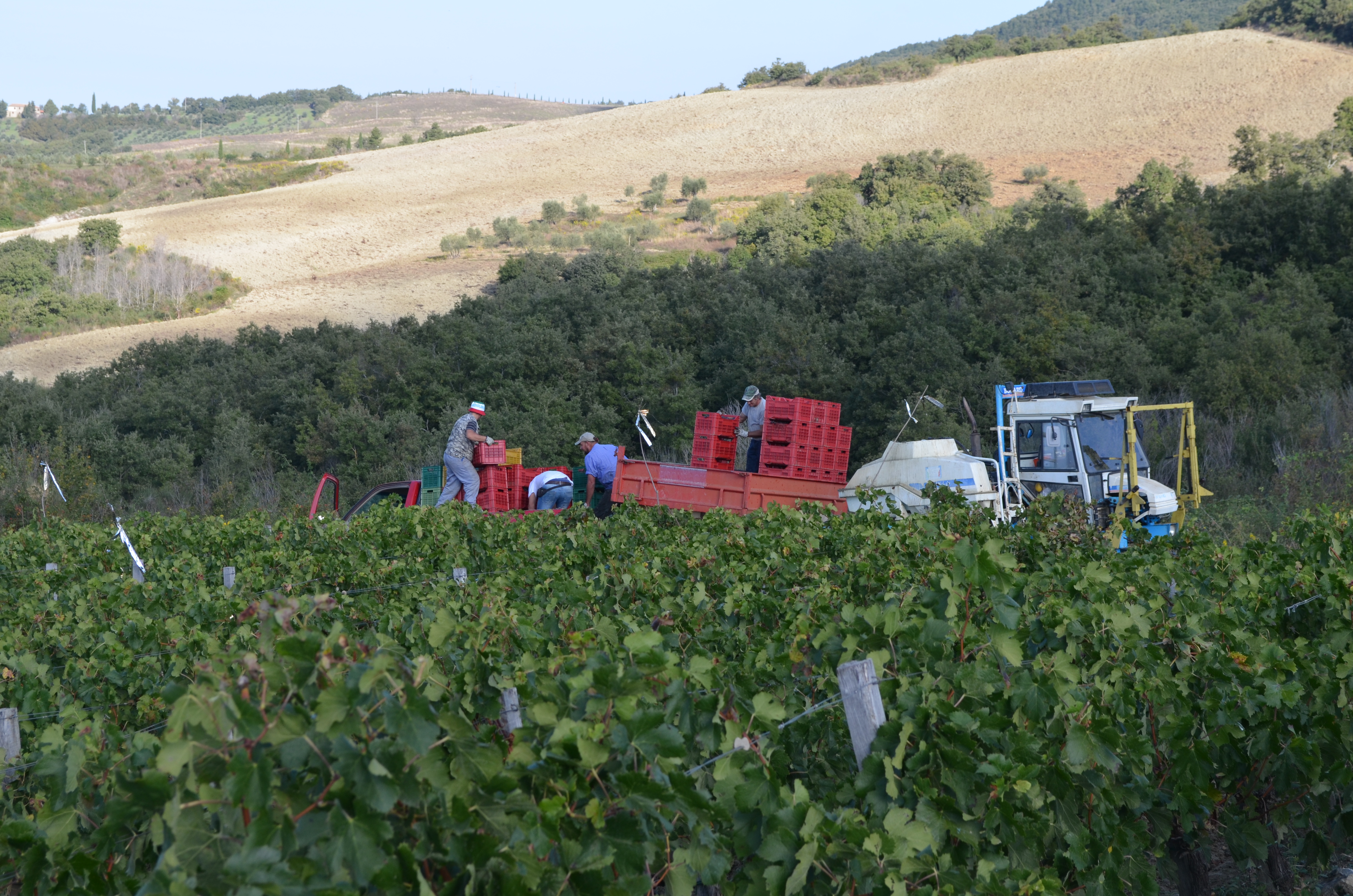 Arriving at Trinoro was like driving across a moonscape, with the rich, clay-filled earth cracked and churned from the recent wheat harvest. Only after cresting the hill from Sarteano into the Val d’Orcia and winding our way down the gravel road did we begin to pass by plots of land filled with vines. Andrea Franchetti, owner of Tenuta di Trinoro, explained to me that, of his 200 hectares, only a small portion is under vine – he’d planted what land he could to which the grapes would take, the rest dominated by the thick clay or hidden under the growth of the thick forests that surround the property.
Arriving at Trinoro was like driving across a moonscape, with the rich, clay-filled earth cracked and churned from the recent wheat harvest. Only after cresting the hill from Sarteano into the Val d’Orcia and winding our way down the gravel road did we begin to pass by plots of land filled with vines. Andrea Franchetti, owner of Tenuta di Trinoro, explained to me that, of his 200 hectares, only a small portion is under vine – he’d planted what land he could to which the grapes would take, the rest dominated by the thick clay or hidden under the growth of the thick forests that surround the property.
 The winery lies at the start of the valley’s base, and the cantina is surrounded by the vines that have been planted on the alluvial plain from the riverbed nearby. The plain sparkled with gold and silver banners, glinting in the sunlight in the hope (however vain) of keeping away the pheasants and other birds from the ripening grapes. Two majestic urns mark the rows between the vines – Andrea had these brought up from an antiques dealer in Agrigento and set them on thick pedestals in such a way that their enormous bellies sit just above the vines as you look out across the fields. In this plain, the graves, he had planted merlot and cabernet franc, the two grapes that form the pillars of Trinoro wines.
The winery lies at the start of the valley’s base, and the cantina is surrounded by the vines that have been planted on the alluvial plain from the riverbed nearby. The plain sparkled with gold and silver banners, glinting in the sunlight in the hope (however vain) of keeping away the pheasants and other birds from the ripening grapes. Two majestic urns mark the rows between the vines – Andrea had these brought up from an antiques dealer in Agrigento and set them on thick pedestals in such a way that their enormous bellies sit just above the vines as you look out across the fields. In this plain, the graves, he had planted merlot and cabernet franc, the two grapes that form the pillars of Trinoro wines.
 When Andrea had first come to the Val d’Orcia in the early 80s, the valley had been completely abandoned during the waves of economic crises that hit Italy in the 60s. Driving up from Rome, he’d stumbled upon an old stone country home and bought it, with an eye to restoring it one day. When he returned ten years later, he never left, preferring at that moment the company of the Sardinian shepherds who’d settled the valley and the silence of the thick forests surrounding the little house to the hustle of city life. Little by little, he began to impose his presence on the land, restoring the building stone by stone, flattening out the land around his house to provide a vista onto the valley below, clearing trails through the trees, planting his first vegetable garden, finding other buildings to restore, and – Roman that he is – building little fountains to bring the sound of trickling water to silence of the valley.
When Andrea had first come to the Val d’Orcia in the early 80s, the valley had been completely abandoned during the waves of economic crises that hit Italy in the 60s. Driving up from Rome, he’d stumbled upon an old stone country home and bought it, with an eye to restoring it one day. When he returned ten years later, he never left, preferring at that moment the company of the Sardinian shepherds who’d settled the valley and the silence of the thick forests surrounding the little house to the hustle of city life. Little by little, he began to impose his presence on the land, restoring the building stone by stone, flattening out the land around his house to provide a vista onto the valley below, clearing trails through the trees, planting his first vegetable garden, finding other buildings to restore, and – Roman that he is – building little fountains to bring the sound of trickling water to silence of the valley.

Winemaking was a secondary thought, something to do. And yet, he did it in the most complete way possible, staging with friends in Bordeaux, bringing back to this sun-soaked valley the Bordelais grapes and winemaking practices, and yet learning the ways in which this particular terroir affects the grapes, leaving the grapes on the vines until late into the season, pushing towards making the richest, ripest wines possible, letting the seasons dictate the final blends, learning and changing and evolving with each passing year. I love the thought of that… whimsy turning into an all-consuming passion, coupled with a drive to do things intensely, obsessively, perfectly.
 In my weeks here, Andrea has taken me into the fields on the hillsides, into the vineyards that have radiated out from the first rows next to his first house and which now cascade down from the sun-soaked rim at the top of his plantings down to the gravelly plain by the winery, alternating from petit verdot and cabernet sauvignon at the top to the fuller plantings of merlot and cabernet franc, with each planting changing based on its slope toward the sun, the soil composition beneath its roots, minor changes in altitude. I’ve tasted berries through varying levels of maturity, watching first the merlot come to maturity, now followed by the cabernet franc, cabernet sauvignon, and petit verdot.
In my weeks here, Andrea has taken me into the fields on the hillsides, into the vineyards that have radiated out from the first rows next to his first house and which now cascade down from the sun-soaked rim at the top of his plantings down to the gravelly plain by the winery, alternating from petit verdot and cabernet sauvignon at the top to the fuller plantings of merlot and cabernet franc, with each planting changing based on its slope toward the sun, the soil composition beneath its roots, minor changes in altitude. I’ve tasted berries through varying levels of maturity, watching first the merlot come to maturity, now followed by the cabernet franc, cabernet sauvignon, and petit verdot.
 We’ve tasted too at different points in the cycle of the moon – Andrea strongly believes in the power of the waxing moon to bring about a spiking in the sugars, and tasting alongside him, I was astounded to see the changes that could be brought on by a single evening. He showed me how he waits for the berries to show a certain flavor profile before he knows they’re ready to be picked. As they near the end, the grapes maintain a freshness, like a juicy plum with its tart acidity paying on the tongue. For Andrea, this is not yet ripe enough – it must pass into a phase of pure sweetness, which he calls plain vanilla, and then it’s a moment’s notice, especially as the quarter moon approaches, before the grape bursts into its full ripeness, thick with lush, honeyed flavors, and the harvesting begins.
We’ve tasted too at different points in the cycle of the moon – Andrea strongly believes in the power of the waxing moon to bring about a spiking in the sugars, and tasting alongside him, I was astounded to see the changes that could be brought on by a single evening. He showed me how he waits for the berries to show a certain flavor profile before he knows they’re ready to be picked. As they near the end, the grapes maintain a freshness, like a juicy plum with its tart acidity paying on the tongue. For Andrea, this is not yet ripe enough – it must pass into a phase of pure sweetness, which he calls plain vanilla, and then it’s a moment’s notice, especially as the quarter moon approaches, before the grape bursts into its full ripeness, thick with lush, honeyed flavors, and the harvesting begins.

